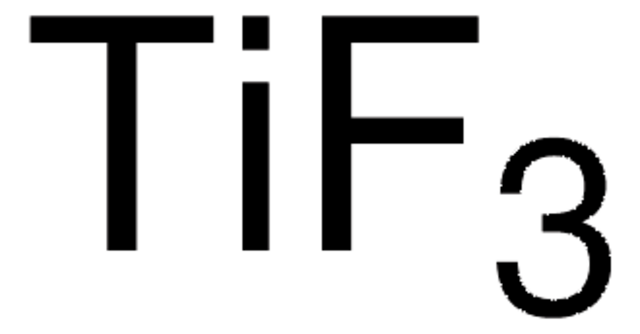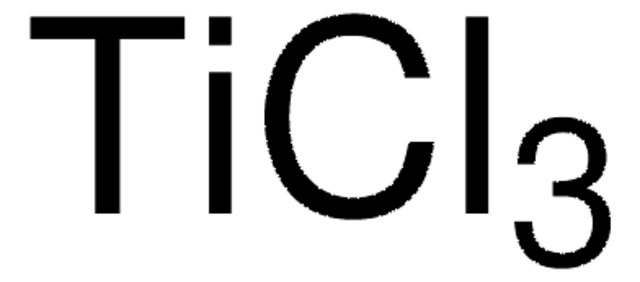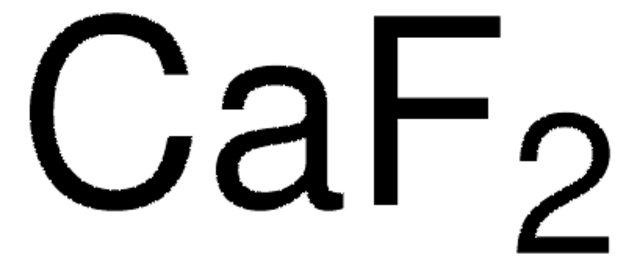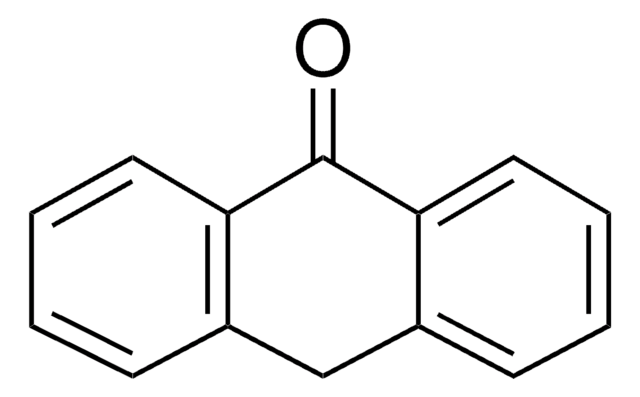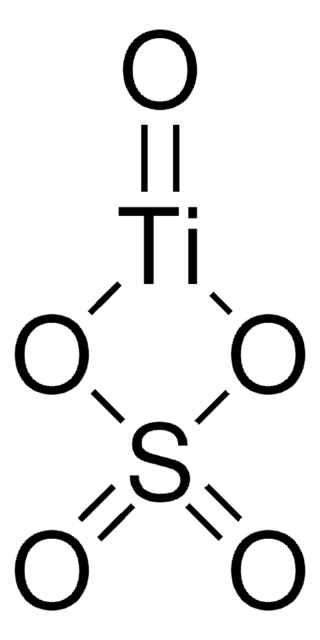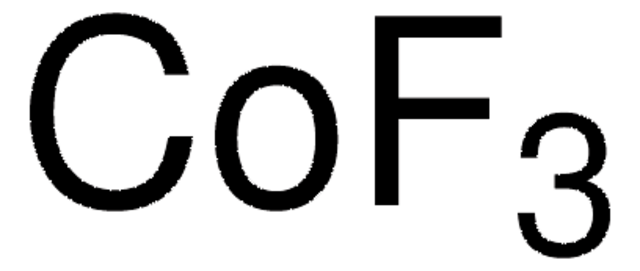333239
Titanium(IV) fluoride
Synonyme(s) :
Titanium tetrafluoride, Titanium fluoride
About This Item
Produits recommandés
Forme
powder and chunks
Niveau de qualité
Pertinence de la réaction
core: titanium
reagent type: catalyst
Densité
2.798 g/mL at 25 °C (lit.)
Chaîne SMILES
F[Ti](F)(F)F
InChI
1S/4FH.Ti/h4*1H;/q;;;;+4/p-4
Clé InChI
XROWMBWRMNHXMF-UHFFFAOYSA-J
Application
- Chemoselective synthesis and deprotection of geminal diacetates of aldehydes
Mention d'avertissement
Danger
Mentions de danger
Classification des risques
Acute Tox. 4 Dermal - Acute Tox. 4 Inhalation - Acute Tox. 4 Oral - Eye Dam. 1 - Skin Corr. 1B
Code de la classe de stockage
8A - Combustible corrosive hazardous materials
Classe de danger pour l'eau (WGK)
WGK 3
Point d'éclair (°F)
Not applicable
Point d'éclair (°C)
Not applicable
Équipement de protection individuelle
Eyeshields, Faceshields, Gloves, type P3 (EN 143) respirator cartridges
Faites votre choix parmi les versions les plus récentes :
Déjà en possession de ce produit ?
Retrouvez la documentation relative aux produits que vous avez récemment achetés dans la Bibliothèque de documents.
Les clients ont également consulté
Articles
Titanium dioxide (TiO2) is an important n-type semiconducting material that shows interesting characteristics such as photoswitchable surface wettability, high photocatalytic activity, bistable electrical resistance states and high electron drift mobility.
A Review of Mesoporous TiO2 Thin Films
Notre équipe de scientifiques dispose d'une expérience dans tous les secteurs de la recherche, notamment en sciences de la vie, science des matériaux, synthèse chimique, chromatographie, analyse et dans de nombreux autres domaines..
Contacter notre Service technique

